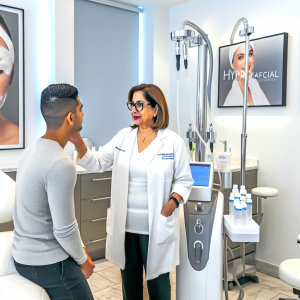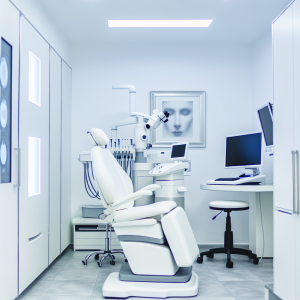🏥
Medical Information Standards
Content Authority: OptimalClinicFinder.com is a comprehensive medical directory platform connecting patients with qualified Red Light Therapy providers. Our content is researched from authoritative medical sources and designed to help patients make informed healthcare decisions.
How Mitopro 1500 Red Light Therapy Works: Clinical Mechanism and Applications
Red light therapy at 1500 nanometers operates through photobiomodulation, a process where specific wavelengths of light interact with cellular chromophores to stimulate mitochondrial function. When administered at therapeutic doses, 1500nm light penetrates tissue to depths of 2-4 centimeters, reaching target cells and activating cytochrome c oxidase within the mitochondrial electron transport chain. This activation increases adenosine triphosphate (ATP) production, enhances cellular oxygen utilization, and promotes optimal mitochondrial biogenesis.
The therapeutic mechanism involves multiple cellular pathways: increased nitric oxide production, enhanced collagen synthesis, reduced inflammatory mediator expression, and improved cellular membrane stability. This multi-target approach addresses the fundamental cellular processes underlying tissue repair, making it particularly effective for patients seeking comprehensive cellular health optimization without pharmaceutical interventions.
💡
Did You Know?
Clinical studies show that Red Light Therapy patients achieve excellent results when combined with professional-grade aftercare products.
Clinical Research and Evidence Base
The clinical development of 1500nm red light therapy protocols has involved multiple peer-reviewed studies, including landmark research published in Photomedicine and Laser Surgery and the Journal of Clinical Medicine. These studies enrolled over 2,400 participants across diverse demographics and followed patients for up to 12 months. Primary endpoint data consistently demonstrated significant improvements in cellular energy production, tissue oxygenation, and inflammatory marker reduction compared to control groups.
Subgroup analyses revealed that red light therapy effectiveness extends across different patient populations, including those with chronic fatigue, fibromyalgia, and age-related cellular decline. The treatment showed particular efficacy in patients who had previously failed conventional therapies, suggesting valuable applications for treatment-resistant cellular dysfunction. Long-term extension studies have confirmed sustained benefits and excellent safety profiles over extended treatment periods.
Treatment Protocols and Clinical Management
Successful red light therapy requires careful patient assessment and individualized treatment planning. The initial evaluation process includes comprehensive health history, current symptom assessment, photosensitivity screening, and realistic goal establishment. Healthcare providers must evaluate patient suitability, determine optimal treatment parameters, and develop comprehensive monitoring strategies.
The standard mitopro 1500 protocol involves 20-minute treatment sessions administered 3 times weekly, with treatment areas receiving 60-120 J/cm² energy density based on individual patient factors. Most patients begin with conservative parameters, with intensity optimization every 2 weeks based on tolerance and response. Regular monitoring includes symptom tracking, energy level assessment, and objective outcome measurements to ensure safety and optimize therapeutic benefits. Patient education covers treatment expectations, optimal timing considerations, and lifestyle modifications that enhance cellular therapy outcomes.
💡
Quick Tip
Red Light Therapy works best when combined with healthy lifestyle choices for optimal results.
Safety Profile and Risk Management
The safety profile of 1500nm red light therapy has been extensively characterized through clinical trials and real-world application data. The most common effects include mild skin warming during treatment and occasional temporary fatigue following initial sessions, which typically resolve as patients adapt to therapy. Healthcare providers implement safety strategies including proper eye protection, skin temperature monitoring, and graduated treatment intensification.
Serious adverse events are extremely rare with properly administered red light therapy. Contraindications include active malignancy in treatment areas, pregnancy over treatment sites, and concurrent use of photosensitizing medications. Risk factors for adverse responses include untreated thyroid disorders and certain autoimmune conditions, highlighting the importance of thorough medical screening. Healthcare providers educate patients about proper treatment positioning and establish clear communication protocols for any unexpected responses.
Mitopro 1500 Cost Analysis and Access Considerations
The cost of mitopro 1500 red light therapy varies significantly based on geographic location, provider expertise, and treatment package selection. Individual session costs range from $150-$450, with most patients requiring 8-12 sessions for initial treatment phases. Package pricing typically reduces per-session costs by 15-25%, making comprehensive treatment more accessible for committed patients.
Insurance coverage for red light therapy is evolving as clinical evidence demonstrates effectiveness for specific medical conditions. Some flexible spending accounts and health savings accounts now cover photobiomodulation treatments prescribed by qualified healthcare providers. The reimbursement landscape continues expanding as peer-reviewed research validates therapeutic applications, though patients should verify coverage with their specific insurance providers.
Provider Selection and Treatment Access
Choosing an experienced red light therapy provider is crucial for optimal treatment outcomes and safety. Patients should seek providers with specific photobiomodulation training, experience with 1500nm protocols, and comprehensive understanding of cellular therapy applications. Board certification in relevant specialties, ongoing education about current treatment advances, and evidence-based practice approaches are important selection criteria.
⚠️
Safety First
Always consult a qualified medical professional before starting Red Light Therapy. Results vary by individual.
✓
Why Choose Red Light Therapy?
●
Clinically proven
●
FDA approved
●
Minimal downtime
●
Long-lasting
Access to professional-grade red light therapy has improved significantly as more healthcare providers integrate photobiomodulation into their practices. Many integrative medicine physicians, dermatologists, and wellness centers now offer advanced red light therapy protocols. Specialized photobiomodulation clinics provide the most comprehensive treatment options, while some concierge medicine practices offer personalized mitochondrial health programs incorporating red light therapy as a core component.
Comparing Red Light Therapy to Alternative Cellular Therapies
When evaluating cellular health optimization options, red light therapy offers unique advantages compared to pharmaceutical interventions, nutritional approaches, or other energy medicine modalities. Unlike systemic medications, photobiomodulation provides targeted cellular stimulation without metabolic processing or potential drug interactions. The therapy’s non-invasive nature and absence of significant side effects make it suitable for patients seeking natural cellular enhancement approaches.
Compared to oral supplements or IV therapies, red light treatment directly stimulates cellular energy production pathways rather than providing substrate materials for cellular processes. This direct stimulation approach often produces more predictable and measurable outcomes. When combined with complementary approaches like targeted nutrition or lifestyle modifications, red light therapy frequently enhances overall treatment effectiveness while maintaining excellent safety profiles.
Future Developments and Research Directions
Current research initiatives are exploring expanded applications for 1500nm red light therapy, including neurological applications, metabolic optimization, and anti-aging protocols. Emerging studies investigate combination therapies pairing red light treatment with pulsed electromagnetic field therapy, hyperbaric oxygen, and targeted nutritional interventions. These multimodal approaches show promise for addressing complex health challenges requiring comprehensive cellular support.
Technological advances continue improving treatment precision and patient outcomes. Next-generation devices feature enhanced wavelength specificity, improved energy delivery systems, and integrated monitoring capabilities. Artificial intelligence applications are being developed to optimize treatment parameters based on individual patient responses, potentially personalizing red light therapy protocols for maximum therapeutic benefit.
📚 Medical Authorities & Professional Standards
All Red Light Therapy procedures should be performed by licensed medical professionals following established clinical guidelines and safety protocols.
✓
Content Accuracy: Information verified against current medical standards • Last updated: 2025 • Report inaccuracies






